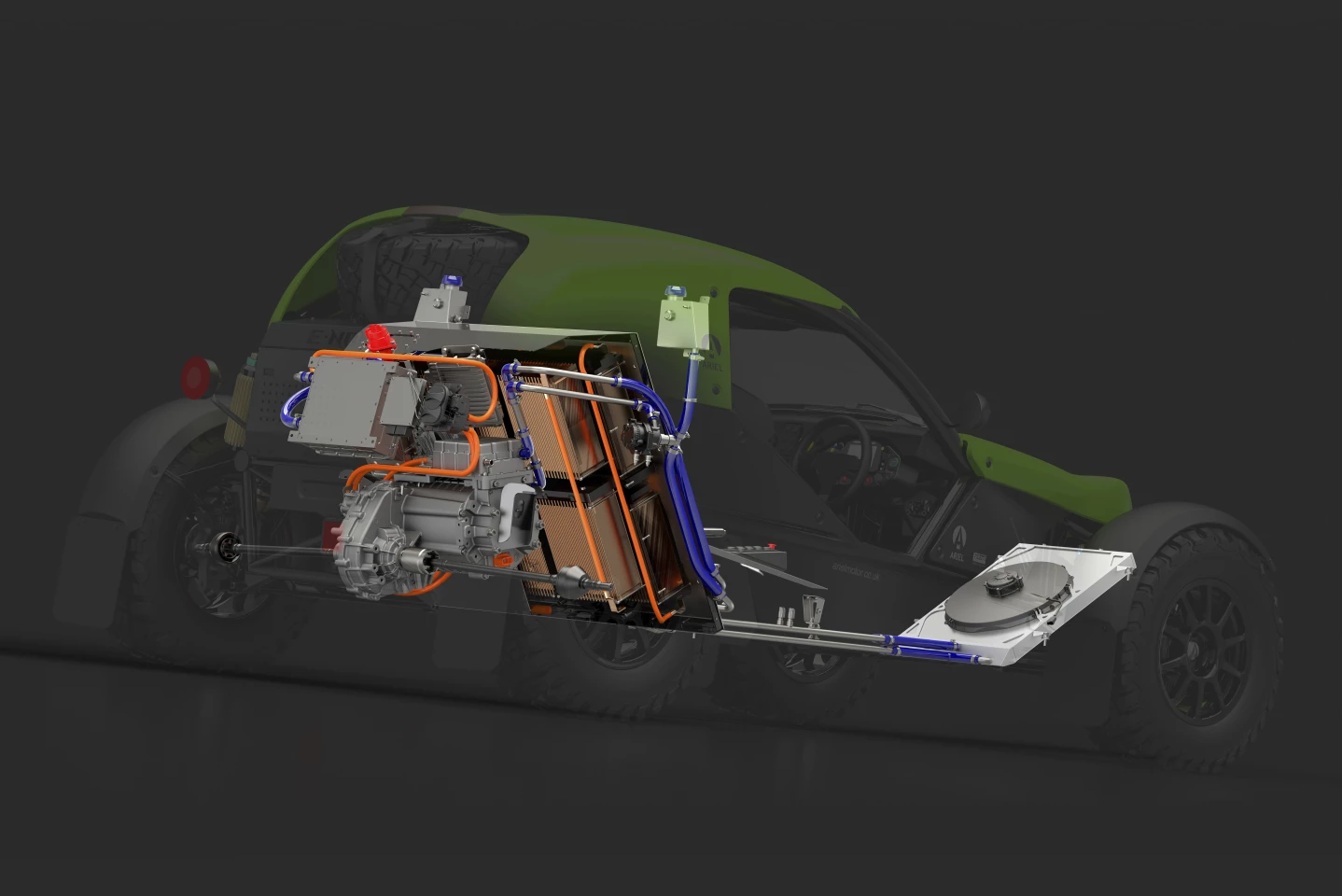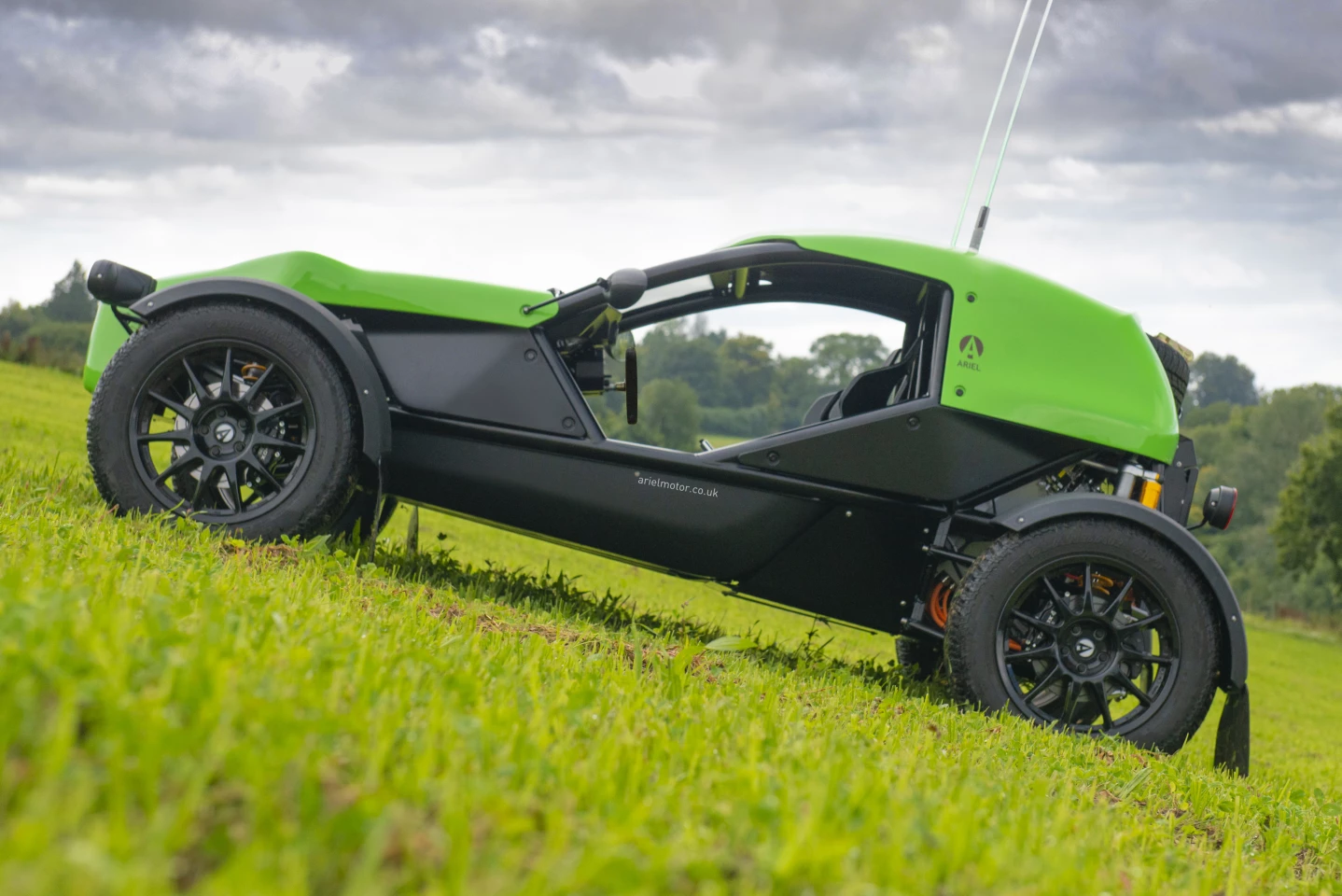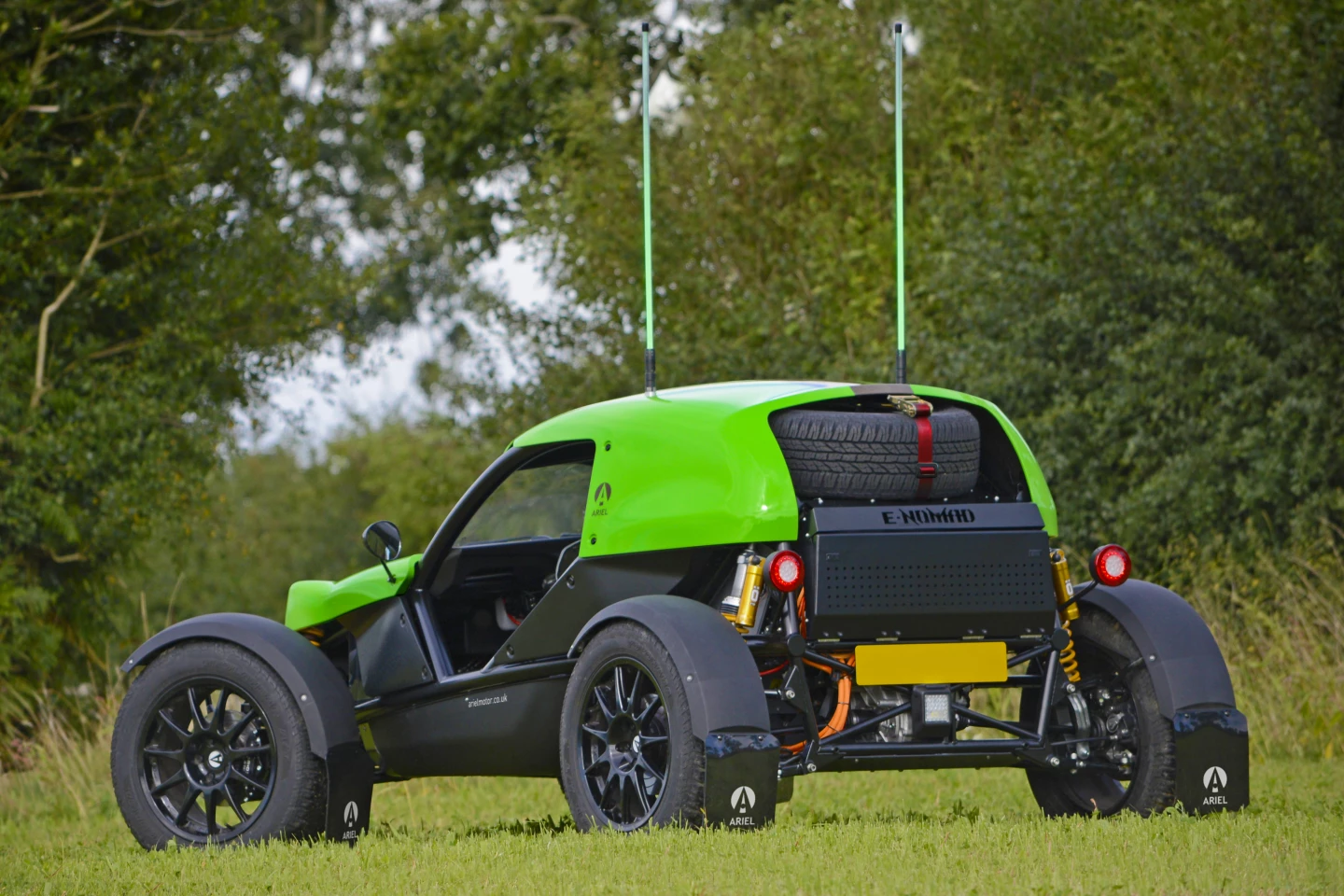The new Ariel E-Nomad concept may not look quite as downright menacing and imposing as a Polaris RZR Pro R (or, for that matter, Ariel's own ICE Nomad), but it definitely throws down the gauntlet. With nearly 500 Nm (369 lb-ft) of insta-torque from its all-electric powertrain, the E-Nomad sprints from 0 to 60 mph (97 km/h) on the flats in a mere 3.4 seconds. And with its sustainable powertrain and construction, the only thing it leaves behind is agitated dust and broken egos.
Ariel may still be best known for its track-blasting Atom, the lovable grown-up's go-cart with exoskeleton and Honda turbo four, but it's been busily expanding its reach over the past decade with debuts like the original Nomad off-roader, a properly faired hybrid "hipercar," a motorcycle and even several ebikes. With the E-Nomad, it explores a potential electric future for its go-anywhere 4-wheeler series.

Ariel started its concept build with the second-generation Nomad it introduced in July. In place of Ford's 2.3-liter turbo, it installs an electric drive system powered by a 41-kWh 450-V battery. Output is down just a touch to 281 hp and 490 Nm, from 305 hp and 518 Nm on the turbo model, but the high-energy Rockfort Pegasus V3 battery cells and single-speed direct drive help the E-Nomad tie things up in the 0-60-mph category with that aforementioned 3.4-sec time.
The E-Nomad concept actually isn't the first electric Nomad project out there. That came way back in 2019 from automotive specialist BorgWarner, whose eDM motor features in the new rear drive system, spinning its way to 12,000 rpm.

The E-Nomad is limited to rear-wheel drive, but it does incorporate a limited-slip rear differential and an "off-road" mode to complement the "on-road" mark on the dial. It also offers both "sport" and "eco" drive settings to instantly adjust throttle and regenerative brake mapping accordingly.
The electric powertrain does add weight to Ariel's notoriously gaunt design, but the E-Nomad still ducks in under 1 ton with a 1,975-lb (896-kg) curb weight. Ariel explains that the energy-dense Pegasus V3 pouch cells from its partner Rockfort Engineering keep the overall battery weight below 661 lb (300 kg).
To further check weight, Ariel has teamed with Bamd Composites to mold the E-Nomad bodywork out of a sustainable fiber-resin concoction it says undercuts even carbon fiber in weight. Based around fibers sourced from Northern European flax plants, the prepeg composite comes in 9% lighter than carbon fiber while cutting an impressive 73% of CO2 emissions created during manufacturing, if we're to believe Ariel's numbers. The material is also recyclable.

Ariel explains it was able to precisely shape the flax-composite body paneling via computational fluid dynamics (CFD) software, leading to a 30% reduction in drag over the standard Nomad. With that type of improvement, we can forgive the lime-green fairings for making the rig look so much softer and less rugged than Ariel's traditional bare tubes.
Perhaps "trading dust with Polaris" would be a better characterization of the E-Nomad's capabilities. It certainly gets out of the gate more quickly than the Polaris RZR Pro R and its tested 5-sec 0-60 mph, and while Ariel hasn't provided a top speed for the concept, the standard Nomad's 130-mph+ (209-km/h+) creates loads of space with the Pro R's 90-mph (145-km/h) top mark. However, we'd definitely throw our trust behind the RZR's established pedigree, switchable 4WD, 29 inches (74 cm) of suspension travel, and biting incisor-like tires when wide-open hardpack transitions to boulder staircases and scree scrambles.
Range is anyone's game, as it looks like the small 12-gal tank and low off-road mileage of the RZR series may have trouble keeping up with the E-Nomad's advertised 150-mile (241-km) range. But is the RZR pilot carrying a jerry can or two? That'll certainly be a faster solution than about-facing back to the grid and fast-charging the E-Nomad for 25 minutes (from 20 to 80%).
So it'll come down to how far and rough the race course is.
Off-roaders may or may not ever get the chance to pit the Ariel E-Nomad against a Polaris, Can-Am or alternative 4-wheeler. Ariel is noncommittal but hopeful as to the E-Nomad's production chances.

"While the E-Nomad is a concept, it does show production intent for the vehicle and hints at just a small part of Ariel’s future," said Ariel's director Simon Saunders. "Once it has been through our usual grueling testing regime we could opt to add E-Nomad alongside its ICE Nomad 2 sibling, so we’ll take great interest in customer feedback on the concept car."
That feedback surely started pouring in last week, when the E-Nomad made its debut at the Cenex Vehicle Expo. Here's to hoping it was positive.
Source: Ariel















